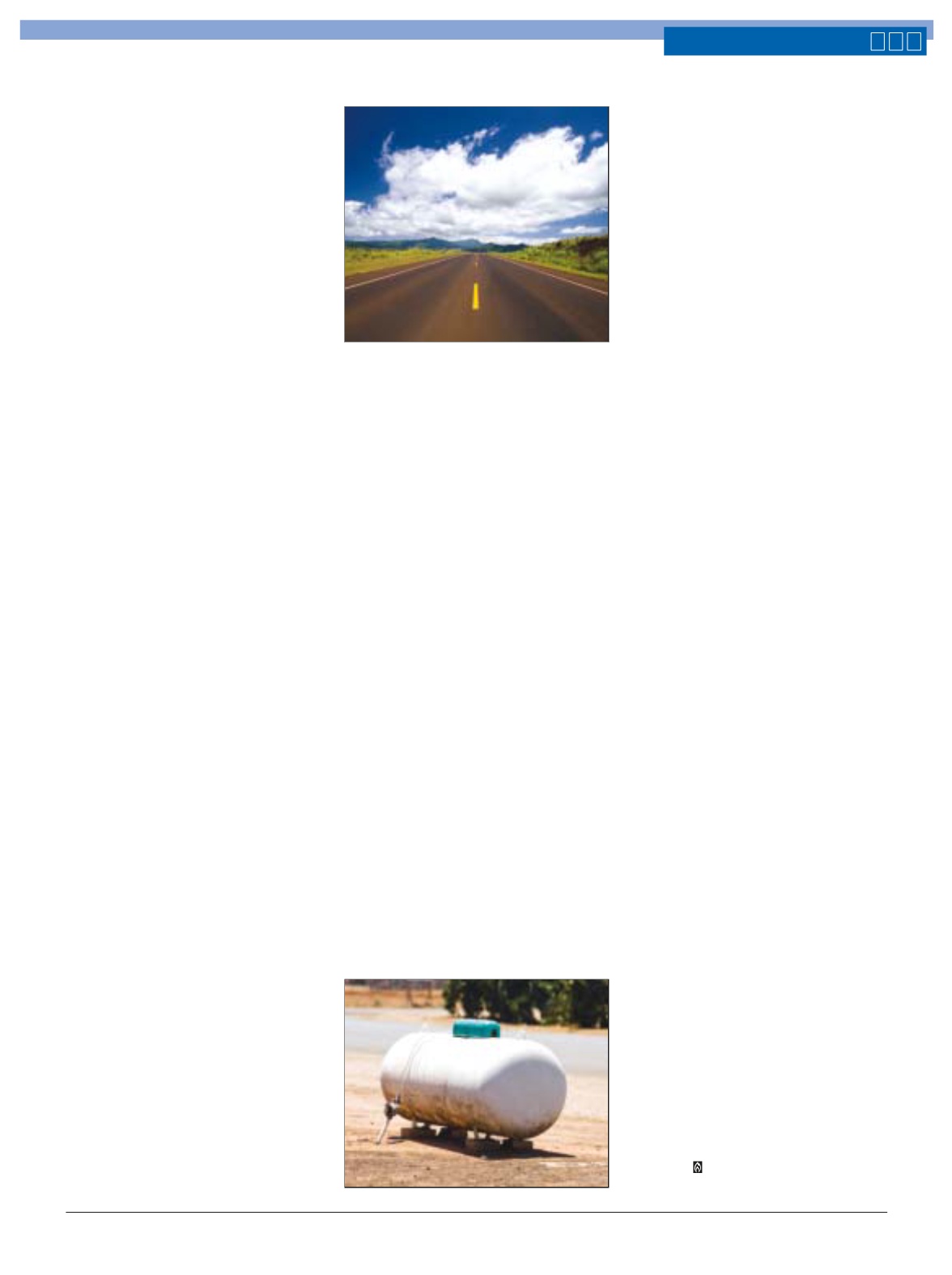
September 2013 • 33
Propane News Briefs
PERC ANNOUNCES FIRST WOMAN LEADER
The Propane Education & Research
Council (PERC) recently announced the
election of a new Executive Committee,
including the first woman to lead the
organization. Paula Wilson, director of
marketing at AmeriGas Propane in Valley
Forge, Pa., presided over her first meeting
as chairwoman. Four other newly elected
officers also began one-year terms: Vice
Chairman–Marketers: Eric Benson, J.S.West
& Co. (Modesto, Calif.); Vice Chairman–
Producers: Michael E. Barnes, BP Energy
Co. (Houston); Treasurer: Robert Barry,
Bergquist Inc. (Toledo, Ohio); Secretary:
Thomas Van Buren, Ferrell North America
(Overland Park, Kan.)
“This Executive Committee really
reflects the makeup of the propane industry,
with marketers, producers, and equipment
suppliers from companies large and small
and from across the country,” PERC
President and CEO Roy Willis said. “Paula
Wilson is a leader who can rally propane
industry members around our work to grow
demand for our product, a widely available
American-made fuel that helps Americans
save money and shrink their carbon foot-
prints,” he added.
At the top of the Council’s to-do list
each July is the review of a budget proposal
developed in collaboration with the PERC
Advisory Committee. The proposed 2014
budget of $39.6 million includes $24.2
million for program activities, an increase
of $4.5 million from program funding
expected in 2013. The program budget
would allocate 57 percent to research and
development, 26 percent to training, and 17
percent to safety efforts. The current assess-
ment rate of four-tenths of a cent per gallon
of odorized propane is expected to generate
revenues of $33.2 million.
“The budget proposal reflects the
Council’s plan to continue creating new
markets and strengthening our core markets
through investments in R&D, safety, and
training,” Wilson said. She noted that one
of her top priorities will be getting more
propane marketers involved in the promo-
tion of newly developed products that run
on propane.
CANADIAN PARTNERSHIP WILL OFFER
LNG, CNG AND AUTOGAS REFUELING
Canada-based energy companies Gaz
Metro Transport Solutions and La Coop
federee have announced that they are
partnering to build public-access alterna-
tive fuel stations in eastern Canada. The
companies say liquefied natural gas (LNG)
will be the priority, along with compressed
natural gas (CNG). But select locations will
also offer propane autogas, biofuels and
electric vehicle charging stations.
The partnership is a part of Gaz Metro’s
“Blue Road” initiative, which is focused on
building out a network of LNG refueling
stations designed primarily for the heavy-
duty trucking sector. The first new station
under the partnership is set to be built this
fall, and a total of five are scheduled to be
operational in Quebec and Ontario by the
end of 2015.
The Blue Road, which covers a corridor
on highways 20 and 401 between Riviere-
du-Loup and Toronto, currently includes
three private LNG fueling stations on prop-
erties owned by Robert Transport.
PHMSA ISSUES WARNING ON
UNDER-ODORIZED PROPANE
The U.S. Pipeline and Hazardous
Materials Safety Administration (PHMSA)
recently issued a safety alert to notify the
public of the risks associated with the
under-odorization of Liquefied Petroleum
Gases (LPG).
“PHMSA is aware of several incidents
possibly attributed to either the under-
odorization or odorant fade of liquefied
petroleum gas (LPG),” the alert states.
“Most notable of these incidents is one that
happened in Norfolk, MA on July 30, 2010
where an explosion occurred at a residential
condominium complex that was under
construction. Emergency responders from
21 cities/towns deployed personnel to the
accident site. The accident resulted in seven
injuries and one fatality. The subsequent
investigation raised questions as to whether
there was a sufficient level of odorant in the
LPG contained in the on-site storage tanks.
In accordance with Federal and State laws
and regulations, LPG intended for use by
non-industrial entities is generally required
to be odorized, or stenched, to enable the
detection of any unintended release or leak
of the gas.
“LPG is highly flammable and dangerous
to inhale in large quantities. The added
odorant is a safety precaution that helps
warn those in the area that a release of gas
has occurred. In the Norfolk incident, there
appeared to be no warning, i.e. odorant
smell, prior to the explosion, that the on-
site LPG storage tank was leaking.
“PHMSA has consulted with stake-
holders from industry, fire fighter asso-
ciations, and other regulatory agencies in
order to better understand the root cause of
incidents like the one in Norfolk. Although
additional research may be necessary in
order to come to more definitive conclu-
sions, PHMSA has identified situations in
which the risks of under-odorization or
odor fade are more likely to occur.”
The alert went on to outline steps the
industry is taking with PHMSA regarding
odorant injection; new and freshly cleaned
tanks; and odorization standards.
NPGA SEEKS REVISIONS TO
ENERGYGUIDE LABELS
The National Propane Gas Association
(NPGA) is one of several groups that is
pressing the U.S. Department of Energy
(DOE) to revise the yellow EnergyGuide
labels listed with many consumer appli-
ances, according to published reports. If
the propane industry gets its way, these
appliance labels will show additional data
that positions LP gas-fueled appliances
favorably, especially against electricity.
NPGA has been pushing for a full-fuel-
cycle (FFC) measure of energy consump-
tion, which considers the energy consumed
in extracting, processing and transporting
primary fuels through its point of use.
“Full fuel cycle goes back to the extraction
of liquids out of the ground,” Michael
Caldarera, vice president of regulatory and
technical services for NPGA, told LP Gas
magazine.


